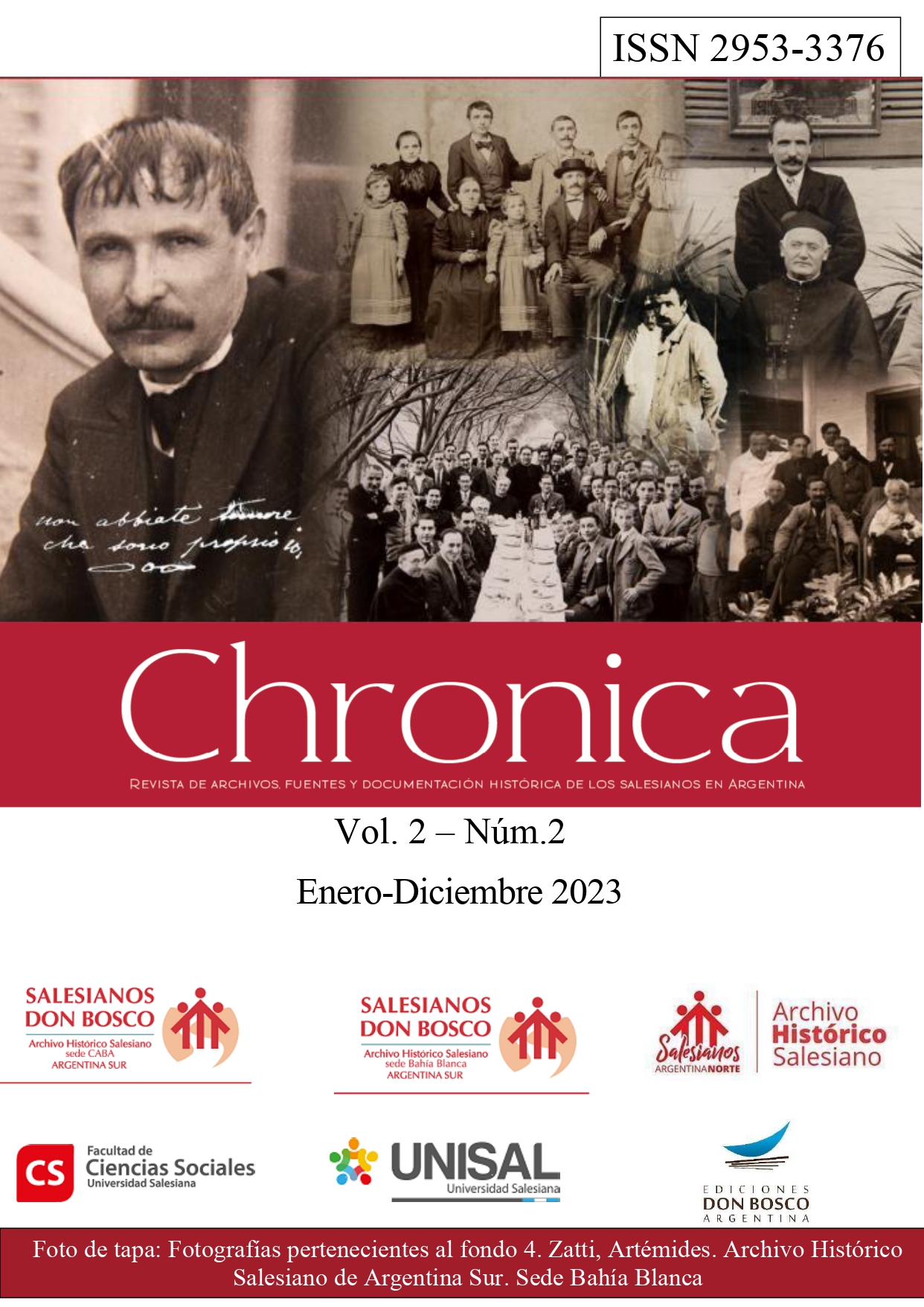Itinerarios de santidad: trayectorias espaciales a través de la vida de Artémides Zatti
Keywords:
Río Negro, Salesians, Hospital Hijas de María Auxiliadora, HealthAbstract
The Salesian Congregations, Salesians and Hijas de María Auxiliadora, began their work in the Territory of Río Negro in 1880. Their missionary and educational action included the founding of two hospitals in the Territory: “San José” in Viedma (1889) and another in San Carlos de Bariloche (1915). The “San José” Hospital was the first health care institution in Patagonia, supported by the Congregations, and therefore part of the incipient territorial health system. These institutions had the authorization and contribution of the central State, and of the beneficent society and charity organizations. The "San José" Hospital had its own health agents as appropriate, such as the Salesians Evasio Garrone and Artémides Zatti, and was intervened and regulated by the National Department of Hygiene together with the Pharmacy. This forced them to have health professionals in the directorate and health care of the hospital and the pharmacy.
Through historical hermeneutics and a large documentary corpus from Salesian and state archives, we propose to reconstruct the historical evolution of the Salesian hospital, both materially and symbolically, in order to understand the impact of this agency and its relations with other social actors in the city of Viedma and its nearby towns.
Published
Issue
Section
License
Copyright (c) 2023 Chronica. Revista de archivos, fuentes y documentación histórica de los salesianos en Argentina

This work is licensed under a Creative Commons Attribution-NonCommercial-ShareAlike 4.0 International License.
Los autores conservan los derechos de autor y garantizan a la revista el derecho de ser la primera publicación del trabajo, con derechos de Licencia Creative Commons https://creativecommons.org/ Reconocimiento-NoComercial-SinObraDerivada (CC BY-NC-ND 4.0). La misma permite a otros compartir, copiar, distribuir, ejecutar y comunicar públicamente la obra, siempre que: a) se cite la autoría y la fuente original de su publicación (revista, editorial y URL de la obra); b) no se use para fines comerciales; c) no se altere, transforme o genere una obra derivada a partir de esta obra.





